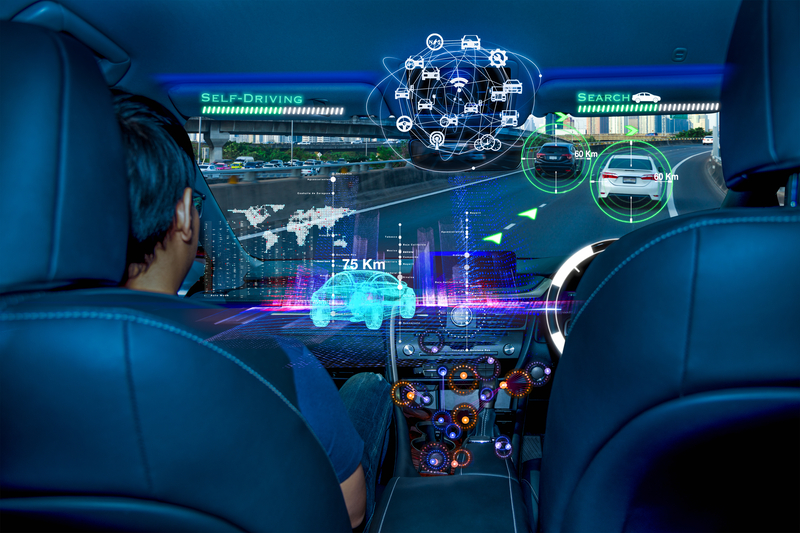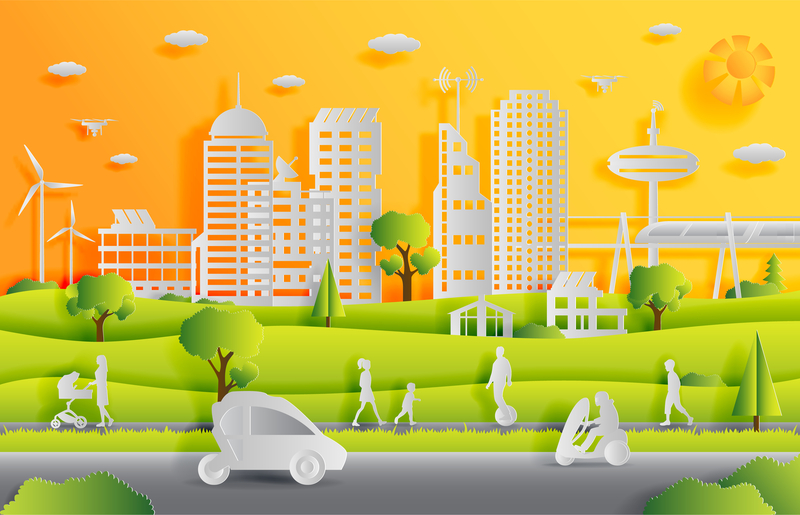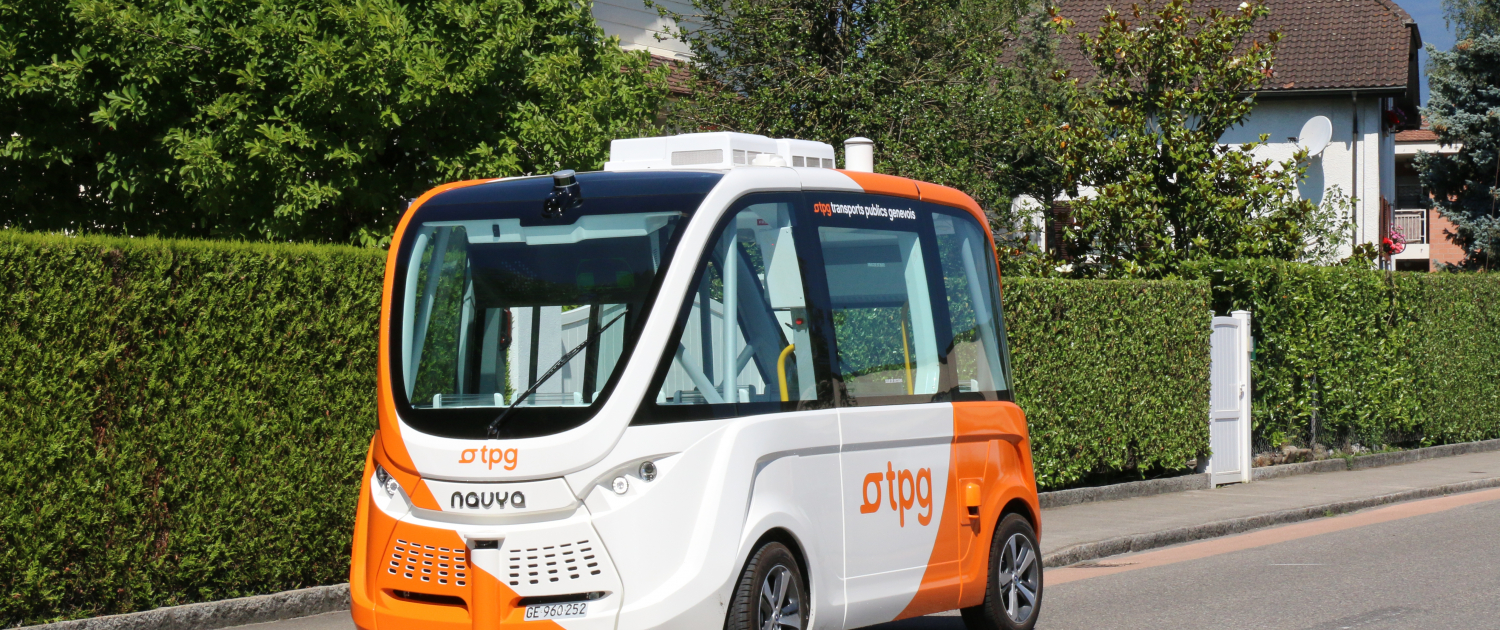
Innovation and deployment of cooperative, connected and automated mobility(CCAM) was the topic of the fifth Ertico-ITS Europe webinar in the approach to this year’s ITS World Congress taking place in Hamburg from 11-15 October 2021.
Welcome to a world where people, goods and society are kept moving by smart mobility systems and infrastructure that enable automated and connected driving. That world isn’t here quite yet, but in cities like Hamburg, the transition is well advanced.
“The Ioki Hamburg shuttle service is a prime example of a contemporary digital public transport solution,” says Michael Barillère-Scholz, CEO of Ioki - a DB Company. “Our vision is to create places for people in cities - spaces for people rather than cars.” His company “connects and integrates new mobility services to existing modes of public transport, so people can move from A to B without using a privately owned vehicle.”
The latest in digital mobility
With experience gained from 64 on-demand and 53 mobility analysis projects, Ioki Hamburg combines mobility analytics with an operating system for digital mobility, Barillère-Scholz continues, “We work with local partners, in this case VHH and HVD, to make mobility smarter, more customer-orientated and demand-driven. Hamburg is a lighthouse, inspiring other cities. Services like this help to make the world a little better.”
Using an app, people book a ride from close to their homes, automatically building a car pool together, and a fleet of electric vehicles connects them to local public transport. Affordable, accessible and green, the service has delivered more than 1.2 million emission-free kilometres and saved 250 tonnes of CO2.
“At Google, we have a strong vision for a sustainable and automated multimodal mobility platform,” says Ricardo Muñoz Núñez, transportation lead EMEA-public sector, Google Cloud.
With priorities such as creating frictionless travel from trip discovery to routing, payment and the overall experience, he says large-scale predictive analytics, enabling the right tools from service providers and an open ecosystem all play a part.
Sustainability is the thread running throughout: “Sustainability is a priority. We’ve eliminated all legacy emissions since 1998 and matched that with 100% renewable energy since 2017. At the same time, we are working on transformative smart transportation platforms powered by AI and machine learning. Ultimately, it’s all about the data: a platform able to handle big data, and from new sources, to deliver a seamless experience.”
Such platforms must be underpinned by sustainable approaches as we head towards a decarbonised future.
Putting the CCAM jigsaw together
“With CCAM an Ertico focus area, we work with our partners on interoperability and standardisation, in developing Big Data, AI, IoT and Cybersecurity, in raising awareness across stakeholders and society, and helping to co-ordinate R&I, testing and roadmaps,” says Dr Stephane Dreher, senior manager innovation & deployment, Ertico-ITS Europe.
“We also believe in learning by doing. A great deal has been promised by CCAM and a lot of R&I work has been done. It’s time to bring together the various pieces of the puzzle. This means moving from simple, more individual approaches to combining elements and their impacts, learning from each other, and delivering realistic solutions under real-life conditions.”
“By 2030, automated mobility will be deployed at large scale in Europe,” says Tom Alkim, policy officer at DG RTD, European Commission, chair of CCAM Working Group 1.
“This will require a large amount of effort in many diverse areas. Key technologies are still being developed and need to be safe, tested and validated. We need the right legal framework. CCAM has to be integrated in broader transport systems, and users and society have to embrace it. All these challenges must be addressed before we can reap the benefits.”
In the next round of Horizon Europe funding, CCAM is set to receive €162 million, covering a range of topics and with the overall objective of accelerating implementation of CCAM.
“This goes beyond testing and validation to include, among other areas, integrating CCAM in the transport system, societal aspects, better co-ordination, and large-scale demonstrations,” Alkim says. “We’ve created a European partnership on CCAM with a budget of EUR 1 billion that has seven main portfolios, all centred around large-scale demonstrations.”
He says this is essential to bring CCAM to the road successfully.
Innovation, automation, data and equity
“We are seeing change in the US in innovation, automation, data and equity,” says Beth Kigel, VP and director of smart and connected solutions, HNTB Corporation.
“One example is the convergence of automated vehicles and ride-hailing, a combination that hits all the right keys: safety, efficiency, sustainability, accessibility and more. My sense is that we are at an exciting inflection point, particularly with the launch of commercial service.”
With a previous focus on testing and deployment in Las Vegas, Phoenix and San Francisco, an autonomous service will be launched on the east coast in Miami by Lyft, Ford and Argo AI this year. Kigel points to other transformative developments, such as Tunnel 2.0, Advanced Air Mobility, and Hyperloop. The latter includes ambitious plans for a Great Lakes Hyperloop to “whisk passengers between Chicago, Cleveland and Pittsburgh in minutes rather than hours.”
“Data will bind together all of these technologies.” She says data integration, AI and predictive analytics are the key to more efficient mobility systems and more liveable communities. “We’re also seeing a mindset change in transportation agencies from thinking primarily about commuters to thinking about residents: creating opportunities, providing access and choices, to create a better quality of life. We’ll be exploring several of these approaches at the World Congress.”
Japan is also working through the challenges of realising automated driving in practice.
“This is a drastic change for humans and requires co-operation as well as competition: to overcome common hurdles in technology, international co-operation, standardisation, public acceptance, deregulation and regulatory reform,” says Manabu Umeda, collaborative research co-ordinator, steering committee for SIP-Adus, University of Tokyo.
Japan’s Strategic Innovation promotion Program (SIP) has 12 themes, including Automated Driving System for Universal Service (Adus). Activity includes developing a framework for traffic environmental information, with a field test in Tokyo’s waterfront area involving 29 partners, 3D mapping and information on traffic lights and merging assistance on main lanes on highways. SIP-adus also carries out safety assurance work, notably comparing real-life tests and evaluations with virtual evaluations through the DIVP (Driving Intelligence Validation Platform) Consortium that includes sensor manufacturers, software companies and universities.
Where can I see CCAM in action?
“We are ready to welcome you to Hamburg, to show you future mobility now,” says Harry Evers, CEO of ITS Hamburg, co-organiser of the World Congress.
“The city’s ITS strategy reflects our own approach: co-operative working to promote innovation, improve safety, increase reliability and efficiency, and reduce environmental impacts.” He says Hamburg is a “a living laboratory. For instance, its 9km test track for automated and interconnected driving in a public urban area, and Heat: Hamburg Electric Autonomous Transportation, a 1.8km test track for an automated minibus in public transport.”
Jacob Bangsgaard, CEO of Ertico-ITS Europe, adds: “We can’t wait to bring the global ITS community together again. We are particularly excited about the support the World Congress is getting from right across the ITS community, including 400 exhibitors, our brilliant commercial partners, all the demonstrations and technical visits, and more. It really is a fantastic line-up.”












